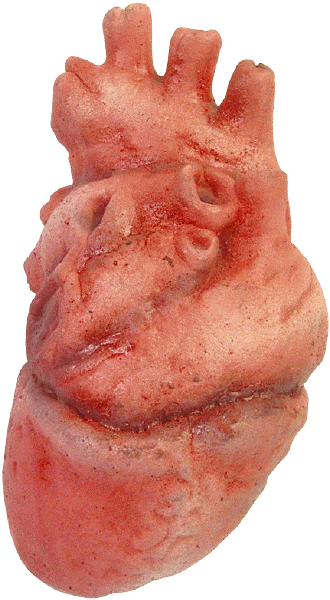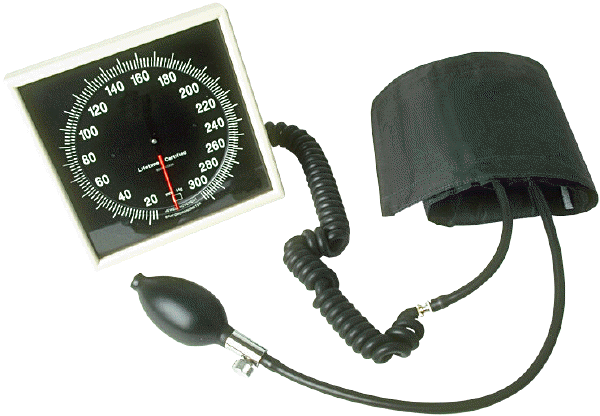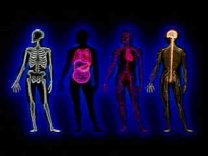|
Click Here for Dr. Steven E. Whiting's (PhD) article "Not All Minerals Are Created Equal"
Boron
RDA: Not Established
Researched Supplement Range: 1.5 mg to 6.0 mg
Average Daily Intake: 0.35 to 0.42 mg
Notes: never above 45 mg per day, interferes with riboflavin and phosphorus uptake
Prior to 1981 boron was thought to be
unimportant in human nutrition. Since then numerous animal and human studies
have established it as essential for normal growth and for hormones
involved in bone metabolism, and for normal balanced levels of
estrogen and testosterone.
A 1988 study by Neilsen and Prasad "Essential and Toxic Trace Elements
in Human Health and Disease," found that boron is essential for
the manufacture of several hormones.  Overaggressive marketing claims touted boron for high testosterone levels; this is false, boron only helps the body to maintain normal levels. Of course without those normal levels many facets of enjoyable living will suffer. Overaggressive marketing claims touted boron for high testosterone levels; this is false, boron only helps the body to maintain normal levels. Of course without those normal levels many facets of enjoyable living will suffer.
The U.S. Department of Agriculture conducted a study on boron and found that within eight days of boron supplementation of 3 milligrams,
the test group of postmenopausal women showed 40% less loss of calcium
and 33% less loss of magnesium through their urine than before boron
supplementation. In spite of this study and numerous others,
boron has yet to be added to the "Essential Nutrient"
list and given an RDA intake level.
| Body Components and Functions
|
Bones -- cofactor for mineral uptake into bone matrix structure
Hormones -- including estrogen and testosterone
|
| Deficiency Symptoms |
insomnia muscle cramps |
bone pain backache |
PMS and menstrual cramps menopause problems |
| Therapeutic Uses |
|
fluid retention depression
hot flashes backache |
| Natural Sources |
Cheese, sardines, salmon, dark leafy vegetables, and sesame seeds |
Home | Products | Return to Pick A Nutrient... | Return to Shopper's Comparison
Calcium
RDA: 1,200 mg
Researched Supplement Range: 1,000 mg to 1,600 mg
Average Daily Intake: 743 mg
Notes: above 2,500 mg per day may stress the kidneys and may result in kidney stones, spread dose out during day and take with food.
Most calcium in the body is contained in the bones, but about 1% is used for nerve impulses and muscle contractions (including heart, kidney, and other organs) that sustain life and provide movement. Calcium participates in the protein structuring of RNA and DNA (so it affects the genetic structure and genetic mutations in the body's constant cellular replacement program).
Deficiencies of calcium and magnesium have been linked by researchers to high blood pressure. Calcium also aids in reducing the symptoms of premenstrual syndrome, and even in protection against colon cancer.
If daily calcium intake is inadequate the body steals bone calcium so that you won't die. In other words, your Blood Serum Calcium and Bone Calcium levels are constantly adjusting to maintain your most vital body functions.
A variety of calcium supplements exist, but absorption will vary greatly depending on the type of calcium, added cofactor nutrients that enhance calcium uptake, and individual bioabsorption (mainly adequate digestive acids to dissolve the calcium by the time it reaches the small intestines).

Antacids, such as Tums™, are a ridiculously poor source. First of all, most brands contain high levels of aluminum. They also contain calcium, but none of it is ever absorbable since the antacid neutralizes all stomach acids. So when you see an antacid company advertising their product as a calcium supplement, just grin from ear-to-ear because you know it's one of the biggest supplement hoax's on today's market.
Chelated calcium forms like gluconate, citrate, fulvate, and amino acid chelates are metal-free. The citrate malate form is to our knowledge the most bioavailable form of calcium ever researched. The poorest sources of calcium are the carbonate or dolomite type and these types can even contain metallic aluminum or lead.
If the label doesn't say what type of calcium is in a product it is probably the cheap carbonate form. Any company that puts more expensive chelates in their product will want to promote that fact on their label. If a product lists both the chelate form and the carbonate form you should avoid it--most likely it has lots of carbonate and just a little bit of chelate in it so that a semi-educated consumer will think that it is a good product. It will cost less, but by using that cheap calcium supplement you are cheating your body!
| Body Components and Functions
|
Bones, teeth, nails, blood, heart, skin, and soft tissue.
The most important of the 11 nutrients known for bone/tooth formation, blood clotting, heart rhythm, nerve tranquilization, nerve transmission, muscle growth and contractions.
|
| Deficiency Symptoms |
heart palpitations insomnia |
muscle crampsnervousness |
arm/leg numbnesstooth decay
|
| Therapeutic Uses |
|
foot/leg crampsinsomniamenstrual cramps menopause problems |
|
| Natural Sources |
Cheese, sardines, salmon, dark leafy vegetables, and sesame seeds. |
Home | Products | Return to Pick A Nutrient... | Return to Shopper's Comparison
Chromium
RDA: 50 mcg to 200 mcg
Researched Supplement Range: 50 mcg to 800 mcg
Average Daily Intake: 25 mcg
Note: Trivalent chromium is very safe. However, hexavalent industrial chromium is highly toxic and a known carcinogen, so steer clear of fumes and dust if you work in that environment. Ongoing studies using up to 1,000 mcg per day have shown no toxic effects.
Chromium was identified in 1957 by researchers Walter Mertz and Kenneth Swartz as the active component of the "glucose tolerance factor (GTF)." Signs of chromium deficiency mirror the symptoms of Type II Adult Onset Diabetes. Read on and you will see that chromium is an extremely important nutrient, and yet it took over 30 years before chromium was listed in the 1989 edition of the RDA handbook. That RDA handbook points out that chromium is essential for normal glucose metabolism, insulin metabolism, fatty acid metabolism, and muscle growth.
Recent studies found that chromium helps raise HDL cholesterol, the "good" kind that escorts bad cholesterol out of your body. The 30-year delay makes chromium a good example of why you should not regard the RDA guidelines as an up-to-date source of optimal nutrition information.
Many studies have been done on the muscle-enhancing and fat-reducing effects of chromium picolinate. In one study, patients were given chromium picolinate in one of the following three doses daily for 2 1/2 months: 0 microgram (placebo), 200 micrograms, or 400 micrograms. The fifteen patients taking the 200 mcg and 400 mcg dose lost an average of 4.2 pounds of fat. The group taking the placebo lost only 0.4 pounds. Even more impressive was the chromium group's muscle gain (1.4 versus 0.2 pounds) versus that of the placebo group. The results were most striking in elderly subjects and men. The men taking chromium picolinate lost more than 7 times the body fat as those taking the placebo (7.7 versus 1 pound)
 Another intriguing area of study is a series that was done on pigs at the Baton Rouge LSU Department of Animal Science. Pigs are unique because they tend to overeat and get fat, just like humans, and they have a similar insulin metabolism. However, pigs won't cheat or change their habits, they don't even know they are being studied! They just belly up to the trough and "pig out" as usual. The test group were fed chromium picolinate and compared with a separate control group. The chromium fed pigs increased their lean tissue mass by an average of 7% and reduced what they term "tenth-rib fat" by 21%. That's a much leaner healthier pig, and the lazy porker didn't even have to start an exercise program.
Another intriguing area of study is a series that was done on pigs at the Baton Rouge LSU Department of Animal Science. Pigs are unique because they tend to overeat and get fat, just like humans, and they have a similar insulin metabolism. However, pigs won't cheat or change their habits, they don't even know they are being studied! They just belly up to the trough and "pig out" as usual. The test group were fed chromium picolinate and compared with a separate control group. The chromium fed pigs increased their lean tissue mass by an average of 7% and reduced what they term "tenth-rib fat" by 21%. That's a much leaner healthier pig, and the lazy porker didn't even have to start an exercise program.
The average American diet is chromium deficient. Researchers estimate that two out of every three Americans are hypoglycemic, prehypoglycemic, or diabetic. It's easy to see why since 98% of chromium is destroyed when flour is refined and the flour was already chromium deficient from being grown on depleted farm soils. The average American consuming the average diet laden with sugars and refined flour doesn't stand a chance. It doesn't take long to add up the score and see why adult onset diabetes is winning and the average American is losing.
| Body Components and Functions -- Arteries, and blood. Part of glucose and insulin metabolism (energy). Weight-loss aid while increasing lean body mass.
|
| Natural Sources | Brewers yeast, whole grains, raw cane sugar, meat, shell fish, chicken, clams, and corn oil. |
Home | Products | Return to Pick A Nutrient... | Return to Shopper's Comparison
Cobalt
RDA: 3 mcg to 4 mcg
Researched Intake Guide: Not set to date
Average Daily Intake: Unavailable
Cobalt is one of the essential trace minerals that has been taken out of our soils by replacement of only NPK.
 Until the 1940's, most farmers returned essential minerals to the soil by mulching, manuring, and crop rotation. At the end of the Second World War, drug conglomerates making nitrates and phosphates for explosives, were frantic for new markets, and began selling NPK fertilizers at incredibly low prices that made traditional farming methods uneconomic. So therefore, the American soils have been reduced to only Nitrogen, Potassium, and Phosphorus, leaving out all the other essential trace minerals.
Until the 1940's, most farmers returned essential minerals to the soil by mulching, manuring, and crop rotation. At the end of the Second World War, drug conglomerates making nitrates and phosphates for explosives, were frantic for new markets, and began selling NPK fertilizers at incredibly low prices that made traditional farming methods uneconomic. So therefore, the American soils have been reduced to only Nitrogen, Potassium, and Phosphorus, leaving out all the other essential trace minerals.
Human bodies need essential minerals to grow, cobalt is one that forms an essential part of vitamin B¹². It is also a necessary cofactor for making the thyroid hormone.
| Body Components and Functions -- Blood. Aids in hemoglobin formation.
|
| Deficiency Symptoms |
slow growth and development |
| Therapeutic Uses |
anemia retardation |
| Natural Sources | All green leafy vegetables, clams, liver, oysters, milk, and red meat. |
Home | Products | Return to Pick A Nutrient... | Return to Shopper's Comparison
Copper
RDA: 1.5 mg to 3.0 mg
Researched Supplement Range: 0.5 mg to 3.0 mg
Average Daily Intake: 1.2 mg
Note: High dosages of copper—15 mg to 35 mg—could adversely affect zinc absorption.
Copper is an essential trace mineral involved in many functions in the human body. It helps build bones and make blood. It is also important in forming elastin and collagen, which are the connective tissues of skin, muscles, heart, blood vessels, and lungs. Copper is involved in the healing process, energy production, hair and skin coloring, and taste sensitivity. It is also needed for healthy nerves and joints. Interestingly the highest tissue concentrations of copper are found in the brain.

According to Dr. Leslie Kelvay, M.D., Sc.D. from the Grand Forks Human Nutrition Research Center, copper-deficient animals have weakened hearts and blood vessels and may die from heart failure or a ruptured aorta. They also develop cartilage breakdown similar to that which takes place in osteoarthritis.
But more is not better, excess above 10 mg will often produce nausea and above 65 mg will cause vomiting (not a healthy situation). So just make sure you get a little bit every day, don't megadose.
| Body Components and Functions -- Blood, bones, brain, connective tissues, skin, and nerves. Development of hair and skin color, healing processes of body, hemoglobin and red blood cell formation.
|
| Therapeutic Uses |
|
|
skin dryness/unelasticityAlzheimer's diseaseimmune dysfunctionalityanemiabaldness
|
| Natural Sources | Beef liver, organ meats, oysters and other shellfish, almonds, beans and legumes, prunes, and green leafy vegetables. |
Home | Products | Return to Pick A Nutrient... | Return to Shopper's Comparison
Flouride
RDA: Not established
Researched Supplement Range: Not set to date
Average Daily Intake: Unavailable

Fluoride is essential for both teeth and bones. Calcium by itself won't build a molecule of bone.
To use the calcium, your body has to have adequate supplies of at least 9 other minerals; and flouride is one of those minerals.
A study done in 1994 states that using calcium and fluoride helps in rebuilding bone loss and prevents new spinal fractures in patients with osteoporosis. Here is an interesting note for nutrient synergy.
Have you heard that molybdenum will be added with the flouride that's in drinking water and toothpaste? We haven't heard it yet either! But since a study was published in Trace Elements and Dental Disease stating that molybdenum combined with flouride is more effective at decreasing cavity rates than just flouride alone; the implementation of a "new and improved" toothpaste is probably just a few months away.
| Body Components and Functions -- Strengthens bones and reduces tooth decay.
|
| Deficiency Symptoms |
Not known |
| Therapeutic Uses |
tooth decaybone growth |
| Natural Sources |
milk, carrots, garlic, seafood, and fluoridated drinking water. |
Home | Products | Return to Pick A Nutrient... | Return to Shopper's Comparison
Germanium
RDA: Not established
Researched Supplement Range: Not set to date
Average Daily Intake: Unavailable
Germanium carries oxygen to the cells. This helps to fight pain, keep the immune system functioning properly, and rid the body of toxins and poisons. A Japanese scientist, Kazuhiko Asai, found that individuals taking 100-300 mg of germanium improved many illnesses including rheumatoid arthritis, food allergies, elevated cholesterol, chronic viral infections, cancer and AIDS.
| Body Components and Functions -- All cells. A relatively new mineral. Builds immune cells, gives energy, and has rejuvenate properties. A powerful antioxidant that also relieves pain.
|
| Deficiency Symptoms |
Not known |
| Natural Sources |
Garlic, aloe, comfrey, chorella, ginseng, and water cress. |
Home | Products | Return to Pick A Nutrient... | Return to Shopper's Comparison
Iodine
RDA: 150 mcg
Researched Supplement Range: 50 mcg to 200 mcg
Average Daily Intake: 250 mcg
Notes: not toxic up to 2,000 mcg daily, but may exacerbate acne
You need dietary iodine to make your thyroid hormones. Because they control all energy in the body, you better get it right. Inadequate iodine causes the thyroid in the neck to grow massive (goiter).
Goiters affect over 200 million people throughout the world, and 96% of it is caused by iodine deficiency! In 1924 the goiter rate for people in the Michigan was an amazing 47%, that is when iodine began to be added to table salt. Now goiters are quite rare in the U.S. and other industrialized countries.
Seafood of any kind is the best food source. Even breathing sea air every day will give you sufficient iodine to prevent goiter. Iodine intakes in the general population, however, have been declining steadily since 1980, presumably because people are cutting down on salt.
| Body Components and Functions -- Hair, nails, thyroid gland, brain, skin, and teeth. Energy production, metabolism (excess fat), physical and mental development. |
| Deficiency Symptoms |
dry hair goiterintellectual disabilitygrowth retardation |
irritability nervousness obesity |
| Therapeutic Uses |
|
goiterhypothyroidism |
| Natural Sources |
Kelp, seafood, fish liver oils, egg yolks, citrus fruits, and garlic. |
Home | Products | Return to Pick A Nutrient... | Return to Shopper's Comparison
Iron
RDA: 15 mg
Researched Supplement Range: 10 mg to 25 mg
Average Daily Intake: 10 mg
Notes: If more than 100 mg of iron are taken per day, your risk of infection increases, and there
are multiple toxic side-effects.s
Iron mainly functions in the hemoglobin in our red blood cells, which transports oxygen from the
lungs to the body's tissues, including the muscles and the brain. Iron can be accessed in many
different types of food, but only a small percent is actually absorbed into the body. About 50% of
women are iron deficient, and women who are menstruating or pregnant are usually the worst.
More than thirty years ago, researchers found that low levels of iron were correlated with a
condition called akathisia, which comes from the Greek word meaning "can't sit down," and is
now called the "restless legs syndrome" (RLS). No further research was done until recently when
the Department of Geriatric Medicine of the Royal Liverpool University in Liverpool, U.K.
completed a study that confirmed that the RLS severity score improved significantly in
relation to the levels of iron in the blood.
The downside of iron is that it is very likely the cause of infant abuse! How so? Here are several
facts, evaluate them for yourself:
Bacteria flourish in an iron rich environment; the medical text, "Iron and Infection"
presents numerous studies that document this. Athletes that over supplement with iron to
get a training edge often find themselves having problems with recurrent illnesses.
Babies don't need extra iron because they are born with high levels of tissue iron; almost twice
as much tissue reserve iron as an adult. This is enough tissue iron reserve for a year of normal
growth.
Mother's milk has almost no iron present, and a baby's virgin bacteria-free digestive system
uses only lactic acid bacteria to digest milk.
Iron in an infant digestive tract causes a flourishing of other bacteria in the digestive tract
causing bloating and gas discomfort, resulting in a ver-r-r-r-r-y fussy infant, and a ver-r-r-r-y
stressed out parent one who can hopefully maintain their patience.
Then there's the fact that lower income families on the government "Women, Infants, and
Children (WIC) program have no choice but to use iron-fortified infant formulas.
Combine fussy infant stress with financial stress and you have a prime formula for infant
abuse.
So if you know someone with a fussy colic infant,  check the infants diet! The whole situation
stems from the old medical texts incorrectly assuming that the common occurrence of pregnancy
anemia means that infants must be anemic. What about the manufacturers? They are responsible
for producing a product that is supposed to replace mother's milk. Don't they realize the truth?
If they do they are just to greedy to give up market share by not putting "fortified with iron" on
the label. check the infants diet! The whole situation
stems from the old medical texts incorrectly assuming that the common occurrence of pregnancy
anemia means that infants must be anemic. What about the manufacturers? They are responsible
for producing a product that is supposed to replace mother's milk. Don't they realize the truth?
If they do they are just to greedy to give up market share by not putting "fortified with iron" on
the label.
| Body Components and Functions -- Blood, bones, nails, skin, and teeth. Hemoglobin production, stress and disease resistance.
|
| Deficiency Symptoms |
breathing difficulties brittle nails |
iron deficiency anemia (pale skin, fatigue) |
constipation |
| Therapeutic Uses |
alcoholismanemia
fatigue
|
|
| Natural Sources |
Bananas, black molasses, prunes, raisins, whole rye, walnuts, kelp, lentils, liver, kidney, heart, red meat, oysters, and raw clams. |
Home | Products | Return to Pick A Nutrient... | Return to Shopper's Comparison
Lithium
RDA: Not established
Researched Supplement Range: Not set to date
Average Daily Intake: Unavailable
| Body Components and Functions -- Nerves, muscles, and brain. Helps transport sodium metabolism to brain nerves and muscles.
|
| Deficiency Symptoms |
nerves mental disorders |
| Therapeutic Uses |
paranoid schizophrenic |
| Natural Sources |
Kelp, dulse, and seafood. |
Home | Products | Return to Pick A Nutrient... | Return to Shopper's Comparison
Magnesium
RDA: 350 mg
Researched Supplement Range: 400 mg to 1,200 mg
Average Daily Intake: 329 mg
Magnesium functions in more than 300 enzymatic reactions. Magnesium is essential for the conversion of vitamin D to its biologically active form that then helps the body absorb and utilize of calcium. The typical American diet is frequently very low in magnesium.
Many surveys have indicated that over 80 percent of Americans get less than the Recommended Dietary Intake (RDI) of this important mineral. The highest magnesium concentration is found in the tissues that are most metabolically active including the brain, heart, liver, and kidney.
"Every 30 seconds someone will die from cardiovascular disease." Magnesium supplements can improve energy production within the heart, improve delivery of oxygen to the heart, reduce demand on the heart, inhibit the formation of blood clots, and improve heart rate. "Magnesium
supplementation has been used in many of these applications for over 50 years!"
Magnesium is also effective with Chronic Fatigue Syndrome. People with CFS have low red blood cell magnesium levels. A recent study in the
United Kingdom conducted a double-blind experiment with CFS patients and magnesium supplements. The researchers concluded that 80% of the patients receiving magnesium reported "significantly improved energy levels, better emotional state, and less pain."
On a daily average, more than 9 million Americans are exposed to noise levels above 85 decibels,
the level where the risk for permanent hearing loss increases exponentially. Since magnesium is
essential in regulating cellular membrane permeability and neuromuscular excitability, researchers
decided to test the hypothesis that noise-induced hearing loss and magnesium are related. The
researchers were right! They discovered that magnesium supplementation is highly effective in
preventing noise-induced hearing loss.
| Body Components and Functions -- Arteries, bones, heart, muscles, nerves, and teeth. An important nutrient--out of the known 11 nutrients--for building bone. Acid/alkaline balance, blood sugar, metabolism (energy), and metabolism (calcium and vitamin C). Needed to balance with calcium.
|
| Deficiency Symptoms |
confusion disorientation |
easily aroused anger nervousness |
|
| Therapeutic Uses |
|
|
stomach aciditytooth decayoverweight |
Home | Products | Return to Pick A Nutrient... | Return to Shopper's Comparison
Manganese
RDA: 2.0 mg to 5.0 mg
Researched Supplement Range: 2.0 mg to 5.0 mg
Average Daily Intake: 2.7 mg
Notes: Low level of toxicity, except industrial manganese dust, which causes locura manganica, permanent insanity
Manganese plays an essential part of proper bone and cartilage formation, and glucose metabolism. Manganese helps build and support strong bones in your body, but many people are deficient in this mineral because as much as 75 percent of all manganese is lost in the refining of wheat to white flour.
Studies of animals
have shown that the animals deficient in manganese have similar bone problems as people with osteoporosis. The bones actually appeared to be riddled with holes. Nobody wants holes in their bones and yet many "calcium bone formulas" will not contain the cofactor manganese.
| Body Components and Functions -- Forms bone and fragile ear and joint cartilage. Brain, thyroid and mammary glands, muscles, and nerves. Is part of glucose metabolism. Enzyme activation, reproduction and growth, sex hormone production, and tissue respiration. Needed for normal bone growth.
|
| Deficiency Symptoms |
ataxia(muscle coordination failure) dizziness |
ear noises hearing loss |
| Natural Sources |
Nuts and grains, spinach, beets, brussel sprouts, and kelp. |
Home | Products | Return to Pick A Nutrient... | Return to Shopper's Comparison
Molybdenum
RDA: 50 mcg to 250 mcg mg
Researched Supplement Range: 40 mcg to 500 mcg
Average Daily Intake: 109 mcg
Notes: toxicity starts at 10 mg daily, causing gout-like disease
Molybdenum functions as a component in several enzymes that are involved in alcohol
detoxification, uric acid formation, and sulfur metabolism. Researchers have also
found a that low molybdenum levels is an associated condition accompanying cancer. Studies in
China concluded that where soil molybdenum levels are low, the rate of esophageal cancer is
higher. "Presumably the anticancer effects of molybdenum stem from its role in the detoxification
of cancer-causing chemicals." Molybdenum is also correlated with cavity prevention and tooth
decay. It is possible that molybdenum enhances flouride, causing less tooth decay.
| Body Components and Functions -- Blood. Integral part of enzymes involved in oxidation processes. |
| Deficiency Symptoms |
Not known |
| Therapeutic Uses |
copper poisoningimproper carbohydrate metabolism |
| Natural Sources |
Brown rice, millet, buck wheat, legumes, leafy vegetables, and whole cereals. |
Return to Pick A Nutrient... | Return to Shopper's Comparison | Research References/Bibliography
Home | Orders or Questions 1-800-943-1123
Phosphorus
RDA: Not established
Researched Supplement Range: Not needed
Average Daily Intake: 1,500 mg
Notes: megadoses cause the body to lose calcium, because of its interaction with calcium metabolism
Out of the 800 grams of phosphorous in your body, about 88% is in your bones. The other 12%
is used for many other important processes in the body including the metabolism of red blood
cells, and the production of ATP in the energy cycle. Phosphorus is found in many foods, so most
people have a sufficient intake of this mineral.
| Body Components and Functions -- Bones, brain, heart, kidneys, nerves, and teeth. Cell growth and repair, energy production, heart muscle contraction, metabolism (calcium, sugar), muscle activity, vitamin utilization. |
| Deficiency Symptoms |
|
irregular breathingnervous disorders |
overweight weight loss |
| Therapeutic Uses |
arthritisstunting growth in children |
|
| Natural Sources |
Dairy products, whole grains, seeds and nuts, egg, fish, and poultry. |
Home | Products | Return to Pick A Nutrient... | Return to Shopper's Comparison
Potassium
RDA: 3,500 mg
Researched Supplement Range: 100 mg to 500 mg
Average Daily Intake: 2,500 mg
Note: Potassium supplements of up to 5 grams per day have been shown to be safe.
Individuals
with kidney diseases or complications should not take supplemental potassium. Also, potassium
taken on an empty stomach can cause nausea.
Potassium is an electrolyte that interacts with sodium to conduct nerve impulses and many other
functions in the cells. In the past, high potassium foods used to dominate, but unfortunately
through evolution, our food has become saturated with sodium. The processing of food fills it
with sodium and reverses the high potassium/low sodium ratio. For example: stone-ground whole
wheat flour is 120 parts potassium to 1 part sodium, whereas commercial whole wheat bread is
100 parts potassium to 570 parts sodium.

This reversal in the potassium/sodium ratio has increased the incidence of high
blood pressure; but studies show that increasing dietary potassium intake will lower blood
pressure. For example, a study was done on adults with mild hypertension. Some of the patients
received either 2.5 grams of potassium per day, 2.5 grams of potassium plus 480 milligrams of
magnesium, or a placebo for 8 weeks. The study showed that systolic blood pressure was lowered
by a significant amount in the patients who received the potassium supplements.
| Body Components and Functions -- Blood, heart, kidneys, muscles, nerves, and skin. Rapid growth, and nerve tranquilization.
|
| Deficiency Symptoms |
acne continuous thirstdry skin constipation |
general weakness insomniamuscle damage |
nervousnessslow irregular heartbeatweak reflexes |
| Therapeutic Uses |
acnealcoholismallergiesburns
|
|
| Natural Sources |
Green leafy vegetables, bananas, tomatoes, water cress, and whole grains. |
Home | Products | Return to Pick A Nutrient... | Return to Shopper's Comparison
Selenium
RDA: 70 mcg
Researched Supplement Range: 200 mcg to 400 mcg
Average Daily Intake: 108 mcg
Note: To maintain the proper level of selenium, only a small amount is needed.
Contrary to
popular belief, more is not always better. Megadosages over the researched intake levels have
caused toxic results, to the point of hair and fingernail loss. Balanced nutrient ratios and broad
interactive nutrient coverage provides the best results.
Since 1949 researchers have been trying to get selenium into the RDA handbook, and it finally
made it 40 years later in 1989. Selenium works as an antioxidant with vitaman E to destroy
hydroperoxides, free radicals that damage cell membranes. Selenium is a antioxidant weapon that
must be in any health arsenal for battling cancer, cardiovascular disease, diabetes, and arthritis. In fact
several of these major diseases have been proven to be associated with selenium deficiency.
The Committee on Diet and Health established by the Food and Nutrition Board extensively
researched the relationship between selenium and cancer. They found that "low selenium intakes
or decreased selenium concentrations in the blood stream are associated with increased risk of
cancer in humans." Although low levels of selenium are linked with many forms of cancer,
respiratory and gastrointestinal tract cancers are affected the most by selenium.

Selenium levels are have also been correlated with heart disease and strokes. Researchers have
found that rates for heart disease are highest where selenium intakes are lowest. "In one double-
blind study, 81 heart attack patients were randomly assigned to receive 100 micrograms of
selenium or a placebo. After 6 months, there were 4 fatal heart attacks and 2 nonfatal heart
attacks in the placebo group compared to no deaths and 1 nonfatal heart attack in the selenium
group."
Among the leading causes of impaired vision and blindness in the United States, cataracts are
number one. The lens depends on adequate levels and activity of superoxide dismutase,
catalase, and glutathione peroxidase; and adequate levels of the accessory antioxidants vitamins E
and C and selenium. The reason selenium supplements are so important is because human lens
glutathione peroxidase is selenium-dependent. Proper selenium levels in the human eye would
significantly cut down on the number of cataract surgeries performed every year in the U.S.
| Body Components and Functions -- Blood, membranes, cells, organs, prostrate gland, liver, and testicles. Powerful antioxidant that protects cellular and organelle membranes from free radical damage. Helps the body handle hydrogenated and polyunsaturated (trans) fats.
Slows the aging process of skin and organs.
|
| Deficiency Symptoms |
|
muscular dysfunction
myalgiaorgan failures immune system problems |
| Natural Sources |
Wheat germ, kelp, garlic, seafood, and bran. |
Home | Products | Return to Pick A Nutrient... | Return to Shopper's Comparison
Silicon
RDA: Not established
Researched Supplement Range: 5 mg to 20 mg
Average Daily Intake: 329 mg
Notes: generally regarded as being nontoxic, but increased levels of silicon have been detected in Alzheimer's disease patients
Second to oxygen, silicon is the most abundant element on earth, but it wasn't regarded as an
essential nutrient for health until 1972. All the publicity about the toxicity of silicon breast
implants should not be confused with silicon as a nutrient. Silicon (the nutrient) is important for
normal bone growth, and for proper integrity of the skin.
One study of 50 women with signs of aging skin, hair and nails produced very significant results.
After 90 days of taking daily oral doses of 10 milliliters of colloidal silicic
acid and applying colloidal silicic acid twice daily to the face, improvements were made in the
thickness of skin, strength of skin, wrinkles, and health of the hair and nails.
| Body Components and Functions -- Bones, hair, nails, and teeth. Helps healing process and builds immune system.
|
| Deficiency Symptoms |
|
poor bone developmentsoft or brittle nails |
| Therapeutic Uses |
hair lossirritations in mucous membranes |
skin disorders insomnia |
| Natural Sources |
Flaxseed, oats, nuts, seeds, apples, and beets. |
Home | Products | Return to Pick A Nutrient... | Return to Shopper's Comparison
Sodium
RDA: 0.5 g
Researched Supplement Range: Not needed
Average Daily Intake: 5 g
Notes: never above 45 mg per day, interferes with riboflavin and phosphorus uptake
Sodium is one of the three main electrolytes in the body. Without electrolytes, the body would
completely stop working. Daily consumption of salty foods provides more than enough dietary
intake.
| Body Components and Functions -- Blood, lymph system, stomach, muscles, and nerves. Normalizes glandular secretions.
|
| Deficiency Symptoms |
excessive sweating chronic diarrhea nausea |
respiratory failureheat exhaustion impaired carbohydrate digestion |
| Therapeutic Uses |
sun strokeheat prostration |
muscular weakness mental apathy |
| Natural Sources |
Sea salt, kelp, shellfish, carrots, and kidney. |
Home | Products | Return to Pick A Nutrient... | Return to Shopper's Comparison
Sulfur
RDA: Not established
Researched Supplement Range: Not set to date
Average Daily Intake: Unavailable
Sulfur is a structural part of most proteins and thereby participates in many life-sustaining
enzymatic, antibody, and tissue activities. It also is found in the anticoagulant heparin and in
chondroitin sulfate and glucosamine sulfate. Deficiency of sulfur results in degeneration of
collagen, cartilage, ligaments, and tendons.
| Body Components and Functions -- Hair, skin, nails, and nerves. Collagen synthesis and body tissue formation.
|
| Deficiency Symptoms |
Not known |
| Therapeutic Uses |
|
dermatitis psoriasis |
| Natural Sources |
Radish, onions, kale, and water cress. |
Home | Products | Return to Pick A Nutrient... | Return to Shopper's Comparison
Vanadium
RDA: 10 mcg to 60 mcg
Researched Supplement Range: 10 mcg to 100 mcg
Average Daily Intake: Unavailable
Notes: excessive amounts lead to cramping and diarrhea
According to an article in the Journal of the American Dietetic Association, vanadium has an
essential role in human nutrition. Vanadium research has shown that this nutrient improves insulin
action and even mimicks the functionality of insulin.
Most research on vanadium has been done on animals, but most researchers would agree that
vanadium would produce similar effect on humans. In one study on goats, researchers discovered
that after a 3-year vanadium restricted diet, female goats gave birth to kids with serious birth
defects. Some of the kids were born with a reversible bone deformity, some died within 3 days,
some could not stand after birth, and the mothers produced significantly less milk.
| Body Components and Functions -- Heart and blood vessels. Inhibits formation of cholesterol in blood vessels.
|
Home | Products | Return to Pick A Nutrient... | Return to Shopper's Comparison
Zinc
RDA: 15 mg to 19 mg
Researched Supplement Range: 15 mg to 50 mg
Average Daily Intake: 8.6 mg
Notes: toxicity of zinc is low up to 500 mg/day
Zinc is a part of every cell in the body and forms part of over 200 enzymes that have functions
ranging from proper action of body hormones to cell growth. Because the body readily
uses zinc for many different functions, it constantly needs to be replaced. Sufficient levels of zinc
are very important for the body's immunity and strength.

Zinc plays a vital role during pregnancy, and because of that, the dosage taken during pregnancy
should be increased. It has been proven that low zinc levels are associated with premature births,
low birth weight, growth retardation, and preeclampsia--a serious condition of pregnancy
associated with elevations in blood pressure, fluid retention, and loss of protein in the urine. A
study was conducted of African-American women who had relatively low plasma zinc levels early
in pregnancy. The women were given either a placebo or 25 milligrams of zinc in the form of
zinc sulfate, and a daily prenatal vitamin/mineral tablet that contained folic acid, iron, and other
minerals but no zinc. The results showed that the babies from the zinc-supplemented group had
greater body weight and head circumferences than the placebo group. Zinc supplementation at
higher dosages during pregnancy is critical for the baby's health.
Zinc also works wonders on the immune system, especially for fighting the common cold. Zinc
works like vitamin C and uses its antiviral activity against several viruses that cause the common
cold. A double-blind clinical trial demonstrated zinc-containing lozenges significantly reduced the
average duration of common colds by 7 days. As you can see, lozenges containing zinc are
miracle workers, which accounts for their increasing popularity.
Male sexual function can also be linked back to zinc. Male hormone metabolism, sperm
formation, and sperm motility are all associated with levels of zinc. Several studies have proven
the success of zinc supplementation in cases of infertility and sterility.
Zinc can also help fight every teenagers worst nightmare--acne. In several studies, zinc has
demonstrated similar results to tetracycline in superficial acne and superior results in deeper acne.
For those who want blemish-free skin, try taking extra zinc.
| Body Components and Functions -- Blood, brain, heart, and prostrate gland. Burn and wound healing, carbohydrate digestion, prostrate gland function, reproductive organ growth and maturity, vitamin B1, and phosphorus and protein metabolism. Needed for bone growth. Often deficient in those with arthritis.
|
| Deficiency Symptoms |
delayed sexual maturity fatigueloss of taste |
poor appetiteprolonged wound healing retarded growth |
sterility |
Home | Products | Return to Pick A Nutrient... | Return to Shopper's Comparison
|
 Minerals are needed to maintain the delicate cellular fluid balance, to form bone and blood cells, to provide for electrochemical nerve activity, and to regulate muscle tone and activity (including organ muscles like the heart, stomach, liver, etc.)
Minerals are needed to maintain the delicate cellular fluid balance, to form bone and blood cells, to provide for electrochemical nerve activity, and to regulate muscle tone and activity (including organ muscles like the heart, stomach, liver, etc.)  Overaggressive marketing claims touted boron for high testosterone levels; this is false, boron only helps the body to maintain normal levels. Of course without those normal levels many facets of enjoyable living will suffer.
Overaggressive marketing claims touted boron for high testosterone levels; this is false, boron only helps the body to maintain normal levels. Of course without those normal levels many facets of enjoyable living will suffer.
 Another intriguing area of study is a series that was done on pigs at the Baton Rouge LSU Department of Animal Science. Pigs are unique because they tend to overeat and get fat, just like humans, and they have a similar insulin metabolism. However, pigs won't cheat or change their habits, they don't even know they are being studied! They just belly up to the trough and "pig out" as usual. The test group were fed chromium picolinate and compared with a separate control group. The chromium fed pigs increased their lean tissue mass by an average of 7% and reduced what they term "tenth-rib fat" by 21%. That's a much leaner healthier pig, and the lazy porker didn't even have to start an exercise program.
Another intriguing area of study is a series that was done on pigs at the Baton Rouge LSU Department of Animal Science. Pigs are unique because they tend to overeat and get fat, just like humans, and they have a similar insulin metabolism. However, pigs won't cheat or change their habits, they don't even know they are being studied! They just belly up to the trough and "pig out" as usual. The test group were fed chromium picolinate and compared with a separate control group. The chromium fed pigs increased their lean tissue mass by an average of 7% and reduced what they term "tenth-rib fat" by 21%. That's a much leaner healthier pig, and the lazy porker didn't even have to start an exercise program.
 Until the 1940's, most farmers returned essential minerals to the soil by mulching, manuring, and crop rotation. At the end of the Second World War, drug conglomerates making nitrates and phosphates for explosives, were frantic for new markets, and began selling NPK fertilizers at incredibly low prices that made traditional farming methods uneconomic. So therefore, the American soils have been reduced to only Nitrogen, Potassium, and Phosphorus, leaving out all the other essential trace minerals.
Until the 1940's, most farmers returned essential minerals to the soil by mulching, manuring, and crop rotation. At the end of the Second World War, drug conglomerates making nitrates and phosphates for explosives, were frantic for new markets, and began selling NPK fertilizers at incredibly low prices that made traditional farming methods uneconomic. So therefore, the American soils have been reduced to only Nitrogen, Potassium, and Phosphorus, leaving out all the other essential trace minerals.

 check the infants diet! The whole situation
stems from the old medical texts incorrectly assuming that the common occurrence of pregnancy
anemia means that infants must be anemic. What about the manufacturers? They are responsible
for producing a product that is supposed to replace mother's milk. Don't they realize the truth?
If they do they are just to greedy to give up market share by not putting "fortified with iron" on
the label.
check the infants diet! The whole situation
stems from the old medical texts incorrectly assuming that the common occurrence of pregnancy
anemia means that infants must be anemic. What about the manufacturers? They are responsible
for producing a product that is supposed to replace mother's milk. Don't they realize the truth?
If they do they are just to greedy to give up market share by not putting "fortified with iron" on
the label. 
